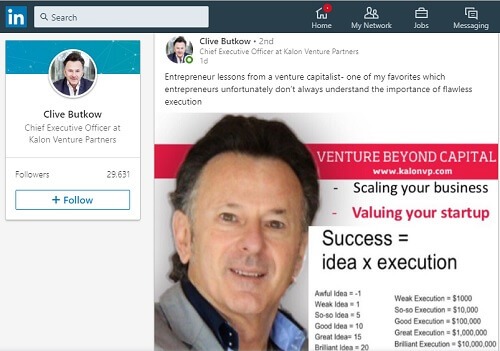
The benefits of social media for small businesses are numerous, whether it’s helping to raise brand awareness or generate leads. However, to fully enjoy the benefits that social media platforms has to offer, your accounts must be up to date and active. To do this you have to regularly and consistently post content.
But how do you create compelling content that will encourage your followers to engage with your brand?
For content creation strategies that work, SME South Africa speaks to Aloysius Magerman, marketing manager for VML South Africa, a digital marketing, advertising and transformation agency. He offers advice for creating quality content for each of your social media platforms Facebook, Twitter, Instagram and LinkedIn.
Before you start, ask yourself
- Have I identified who my customers are in the digital space?
- Do I know which platforms they like to spend their time on?
- Am I doing all I can to reach this audience with interesting and relevant content?
If you answered ‘no’ to any of these questions, you could be missing out on some big opportunities.
How to connect with your customers on each social media platform
You should have a fair idea of who your customers are from your day-to-day dealings with them, so let’s look at the four big social platforms to see if they’re there.
People on Facebook are looking for entertainment, news, and connection. If your business is service-related (IT, accounting, etc.), then Facebook may not be your space. If you’re selling something that would be useful to someone in everyday life, then Facebook is the place to be. Things like food, clothing, or events are perfect candidates for Facebook content.
Facebook has the biggest audience in South Africa right now, but keep in mind that if you want people to see your content, you’re going to have to pay. Facebook’s organic reach (the amount of people that see your content without you having to pay for an ad) has fallen dramatically over the last couple of years, so although you don’t need to spend a lot to reach your fans, this does need to be budgeted for.

Do you make pretty things? Are your customers a little younger? If so, Instagram is the perfect place for your business. Instagram is photo-based, so beautiful imagery is the order of the day.
Instagram uses hashtags, so building your audience is far cheaper and won’t require too much media budget. Be smart about your hashtags and make sure you’re following the right people and talking to them.

Twitter isn’t really about the sell. Twitter is a place where people are looking for up-to-the-minute news and event coverage. It’s also the space where they follow and interact with their favourite music, movie, and television stars.
If you’re an influencer, Twitter could be for you. If you’re looking to sell decorative mugs, maybe look at Facebook or Instagram instead.

Last, but certainly not least, LinkedIn. LinkedIn is the perfect platform for connecting with decision makers. If you’re offering a service that is a little less consumer facing and little more business-to-business, this is the place to be.
Create content and make sure you’re participating in conversations (especially ones happening on the pages of your potential clients).

How often to publish on each platform
Try to post when you have some budget to promote your post and when you have a post worth promoting.
Other social media platforms
Post as often as you can. Experiment with different hashtags and see what kind of content gets you the most traction with your audience.
Magerman’s social media rules for posting
1. Use visuals to entice readers
While making slick, well-produced videos would be ideal, the reality is that this takes time and money. A more realistic approach is to focus on imagery. If you’re not terribly good at taking photographs, invest in a photography course to get you started. Avoid doing text-only posts at all costs.
2. Make it useful to the target market
Whenever you create content, ask yourself, “am I adding value to the person seeing this?” Make sure that everything you post adds value, whether it be a handy tip or a special deal. If you’re not adding value, people will ignore your content and move on or even worse, stop following you.
3. Add a call-to-action
Always make sure that you give your customer something to do. If you’re posting a picture of your product, give them a link to go buy it. If you’re talking about your service, encourage them to get in touch. A post without an invitation is a wasted post.
4. Create a content plan
It’s really helpful to spend a few hours a month planning out your content and what you’re going to talk about on a daily basis. A content plan will save you time in the long-run because you won’t be sitting around trying to brainstorm ideas for a specific day’s piece of content.
It will also help you to be mindful of special days, sporting events, or holidays that might affect your content for that day. Have fun, come up with themes, and try to keep your content relevant.
5. Try new things
Creating content doesn’t have to be a drag. If you’re creating content and not seeing results, it doesn’t mean that social media isn’t for you. Try a different approach, try a different platform, keep shaking things up and most importantly, have fun.






